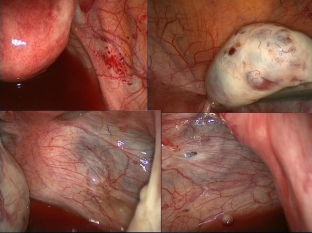How many problems women have with their magnificent gift – opportunity to give birth to new life. There are a huge number of gynecological pathologies, and an important place among them is occupied by such a pathology as endometriosis. Endometriosis is a benign growth of uterine tissue, and depending on the localization, several forms of this pathology are distinguished. Retrocervical endometriosis, which estet-portal.com talks about in detail, is not found very often, but this pathology can cause significant discomfort to the patient, worsening her quality of life.
What symptoms indicate the development of retrocervical endometriosis
Retrocervical endometriosis, a form of endometriosis, affects the cervix, causing very non-specific symptoms. Retrocervical endometriosis is a complex pathology, and it is influenced by many factors: the polyetiological occurrence of the pathological process, the non-specificity of the clinical picture and the complexity of the diagnostic process. But it is very important to detect endometriosis in a timely manner, clarify its localization and eliminate the disease, since an incorrectly treated pathology can negatively affect both the patient’s health in general and her reproductive function.
Retrocervical endometriosis:
- the degree of prevalence of the process in retrocervical endometriosis;
- clinical picture of retrocervical endometriosis: main symptoms;
- basic methods for diagnosing retrocervical endometriosis.
The degree of prevalence of the process in retrocervical endometriosis
With retrocervical endometriosis, the pathological process is localized in the region of the posterior surface of the cervix and its isthmus. Endometrioid lesions have the ability to infiltrative growth, usually in the direction of the posterior fornix of the vagina and the vaginal-rectal recess, as well as the rectum. In accordance with this, 4 degrees of prevalence of the pathological process in retrocervical endometriosis are distinguished:
- First Degree – foci of endometriosis are located only within the fiber of the vagina;
- second degree – endometrioid tissue grows into the thickness of the cervix and the wall of the vagina;
- Third degree – the process affects the sacro-uterine ligaments and the wall of the rectum to the level of the mucous membrane;
- Fourth degree – the entire wall of the rectum and the peritoneum of the recto-uterine cavity are damaged, as a result of which adhesions of the fallopian tubes and ovaries can form.
Clinical picture of retrocervical endometriosis: main symptoms
The clinical picture of retrocervical endometriosis is primarily due to the localization of the pathological process, the proximity of the rectum and pelvic nerve plexus. The main complaint of the patients is the occurrence of aching pains in the depths of the small pelvis, in the lower abdomen and in the region of the sacrum and lower back. Before and during menstruation, pain may increase, acquire a pulsating character, radiate to the rectum and vagina, less often to the side wall of the pelvis or thighs. When the process spreads to the area of the rectum, defecation disorders may occur in the form of constipation, sometimes the discharge of mucus and blood from the rectum on the days of menstruation. If endometriosis grows into the posterior fornix of the vagina & nbsp; - there are characteristic cyanotic "eyes" that can bleed with mechanical damage,







Add a comment